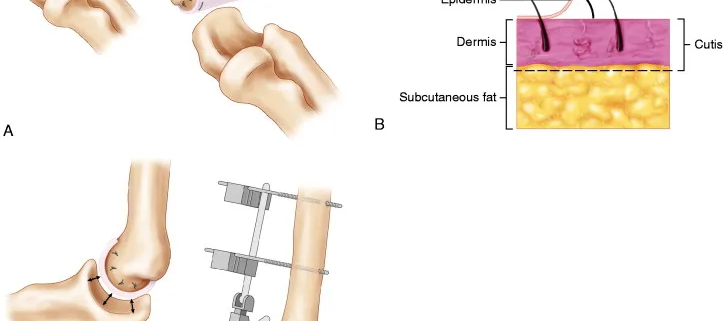Interposition Elbow Arthroplasty

Overview
Interposition elbow arthroplasty is a surgical procedure that can provide mobility improvement for patients with severe elbow injuries or degenerative diseases. It involves replacing the diseased or damaged parts of the elbow with tissue grafts or implants to ensure smooth movement and pain relief. Although less common than hip or knee replacement, it remains a crucial procedure for patients with limited arm functionality.
Types
There are two main types of interposition elbow arthroplasty:
-
- Autograft Interposition Elbow Arthroplasty: This method involves taking tissue from another part of the patient’s body and using it to replace the affected part of the elbow.
-
- Allograft Interposition Elbow Arthroplasty: This method involves using tissue graft from a donor to replace the damaged or diseased part of the elbow.
Causes
Interposition elbow arthroplasty is usually recommended as a treatment option for patients experiencing the following:
-
- Rheumatoid arthritis or osteoarthritis of the elbow
-
- Previous failed elbow surgery
-
- A severe elbow injury
-
- Damage or wear-and-tear of the elbow joints
-
- Advanced age (as joint elasticity decreases)
Symptoms
Before considering interposition elbow arthroplasty, many patients will have exhibited symptoms such as:
-
- Persistent elbow pain
-
- Reduced elbow movement
-
- Elbow stiffness or locking
-
- Swelling or inflammation around the elbow
-
- Weakness or instability of the arm
Diagnosis
Your doctor will assess your elbow’s condition based on a physical examination and by considering your medical history. They may also order additional tests which might include:
-
- An X-Ray or MRI to visualize the internal structure of the elbow
-
- Blood tests, if the doctor suspects an underlying condition like arthritis
Treatment Options
Typically, the interposition elbow arthroplasty is recommended as a final treatment option. Leading up to this, doctors might pursue:
-
- Pain management through medication
-
- Physiotherapy and elbow exercises
-
- Elbow braces or supports
-
- Injections for pain relief
-
- Minimally invasive surgeries
If these treatments are ineffective or no longer provide relief, your doctor may discuss interposition elbow arthroplasty as a long-term solution.
Living With Interposition Elbow Arthroplasty
After surgery, it’s critical to get adequate rest and follow all post-operative instructions. Here are some things to consider:
-
- Physiotherapy and rehabilitation exercises are essential for regaining full range of movement
-
- Avoid heavy lifting or any activity that puts undue pressure on the elbow
-
- Regular follow-ups with your doctor to monitor the healing process
-
- Pain management might be necessary in the early stages after surgery
When to Seek Help
Following surgery, it’s important to seek immediate help if you experience:
-
- Sudden severe pain
-
- New or increased swelling
-
- Signs of infection like redness, discolored discharge, or high temperature
-
- Inability to move the arm
While interposition elbow arthroplasty can greatly improve quality of life, being aware of your body and staying alert for potential complications is crucial.
